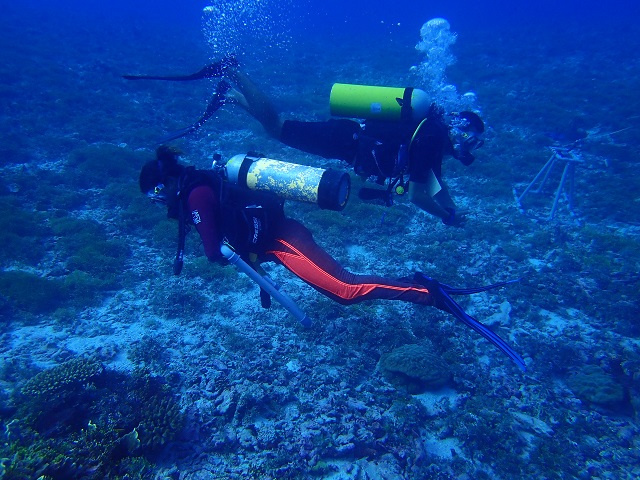Seychelles Marine Science Symposium brings together scientists for more collaboration on research

Aldabra reef monitoring by divers of the Seychelles Islands Foundation. (SIF)
(Seychelles News Agency) - A symposium to determine what marine research is being done in the Seychelles' waters was held recently in the island nation with the participation of a large number of scientists from around the world.
The Seychelles Marine Science Symposium - an initiative of the Blue Economy Research Institute at the University of Seychelles (UniSey)- took place from May 22 to 24.
According to a senior lecturer and researcher at the institution, Dr Murray Duncan, the scientists got to network and discuss their work on maritime research.
Seychelles is an archipelago in the western Indian Ocean with an Exclusive Economic Zone (EEZ) of 1.4 million square kilometres of which only 455 square kilometres is land. The island nation's EEZ is slightly larger than South Africa and about six times the size of the United Kingdom.
"Because there are so many actors spread over such a large area often it is not well coordinated and there is a lack of collaborations sometimes," said Duncan.
He added that two experts might be working on the same research techniques and operating independently, and have never been in that area together to network and collaborate.
Through the symposium, "different researchers in Seychelles got together in one place and built collaborations and made our research better," said Duncan.
More than 200 delegates from 18 countries and 83 different organisations, attended the event which included special scientific sessions organised by the Ocean Project on plastic pollution and SWIOFISH 3.
Also attending were non-governmental organisations in the Seychelles related to the ocean such as the Save Our Seas Foundation (SOSF) and Marine Conservation Society Seychelles (MCSS).
The symposium was held under the theme: "A scientific glimpse into the past, present and future." It included 66 presentations, 31 poster presentations and four keynote addresses and ended with a public science exhibition.





